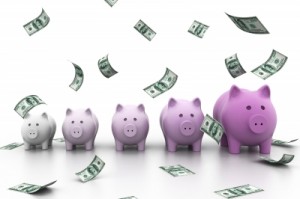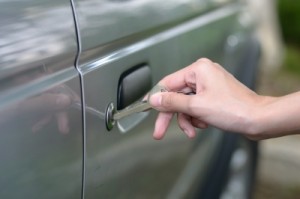There was a time (when I was younger and slightly more financially foolish) that I didn’t recognize coupons as what they truly are, free money.
The real goal here is to be able to do what you want to do and just spend less doing it.
There are a variety of ways to use coupons and sources to obtain them…here are some tidbits I’ve picked up over the last few years.
Some things, you will learn quickly, one doesn’t actually need to pay for. Two that leap to mind are toothpaste and shampoo. Your friendly neighbourhood dentist has $1.50 off coupons for Colgate/Crest for the asking, and have dozens of them – they’re usually happy to give you a few just to find a home for them. After you’ve been going through flyers for awhile, you’ll notice that every couple months, toothpaste will go on sale for $1/tube. $1 – $1.50 = FREE! Some stores (Walmart, for example), will actually apply any remaining discount to the other items in you basket, which means that you have somehow managed to turn a profit. Miraculous, yes? Similar things happen with shampoo…when you find a high value coupon, hold onto it and wait for the item to go on sale.
For products that you like and use a lot, follow those companies on Facebook or Twitter, as they’ll often give out coupons and occasionally free products via social media.
For me, one of my best investments is the yearly Entertainment Book, which is a book full of 50% off and other discount coupons for local restaurants, grocery stores, businesses etc. It’s good from November – November each year, and retails at about $40. $40 is pretty pricey, though. The real secret is to wait until after January, go on the Entertainment Book website, and they’ll have it at 50% off. $20, on the other hand, is a good deal – there are $20 in Safeway coupons alone that make it worthwhile. Even if I don’t use the majority of the coupons in it, there are enough places that I regularly go to make it well worth the outlay. Later on in the year, if you sign up for their bulletins, they’ll sometimes have a $5 special…even if you buy it in July, there are still $10 in Safeway coupons that are useable, making it a net profit, even if you use nothing else. Often I’ll swap the ones I don’t use for the ones I use a lot with other friends who have the book. Given that these are places and things I would do either way, it leaves me more money in my wallet to do other things with.
There are a bunch of sites that offer coupons that you can either print yourself or have mailed to you. A few of them are:
https://www.brandsaver.ca/en_ca/coupons/ (Proctor Gamble products)
Some of them come as coupon inserts in your local paper (Redplum and Smartsource). There will often be tearpads of coupons in local stores for a variety of products. Take only what you will use – karma, people, karma!
The key with coupons is to use them with a sale, bringing the product from cheaper to CHEAP or sometimes even free (see toothpaste example above)! Occasionally, you’ll find a coupon for a product on another product. Don’t buy a product you wouldn’t use just because it’s cheap (unless you have the intention of giving it away to someone or to the food bank)…there’s no point in wasting space or hoarding stuff.
There are some great coupon websites that will actually do a coupon match for you and let you know where the best bang for your coupon buck is, and they’ll often go store by store. Others list new and hot deals, freebies and giveaways. Brilliance!
Some of my favourites are:
http://extremecanadiancoupons.com/
Happy savings! What are your best tips to have more money in your pocket at the end of the day?











